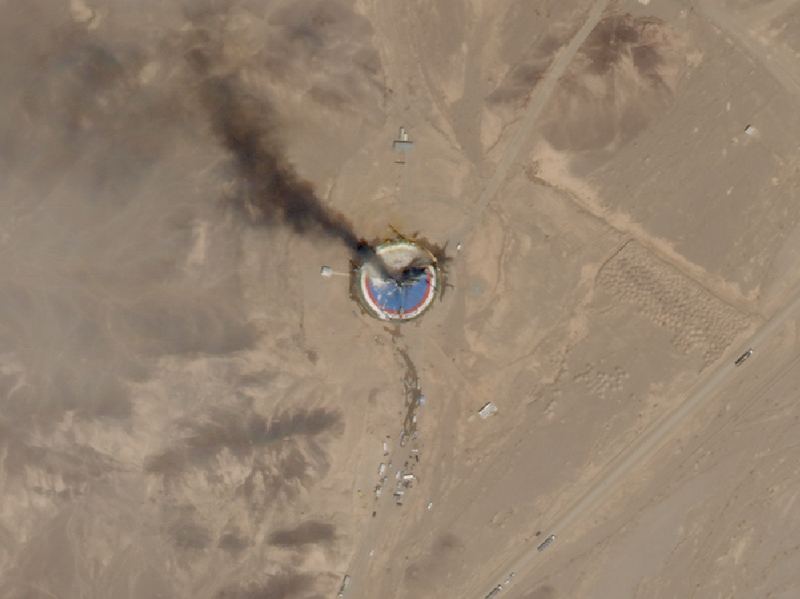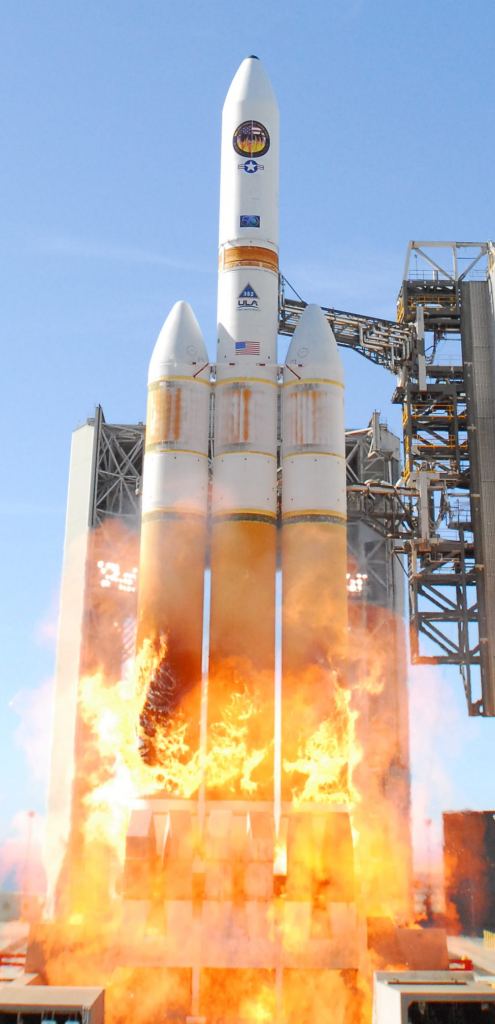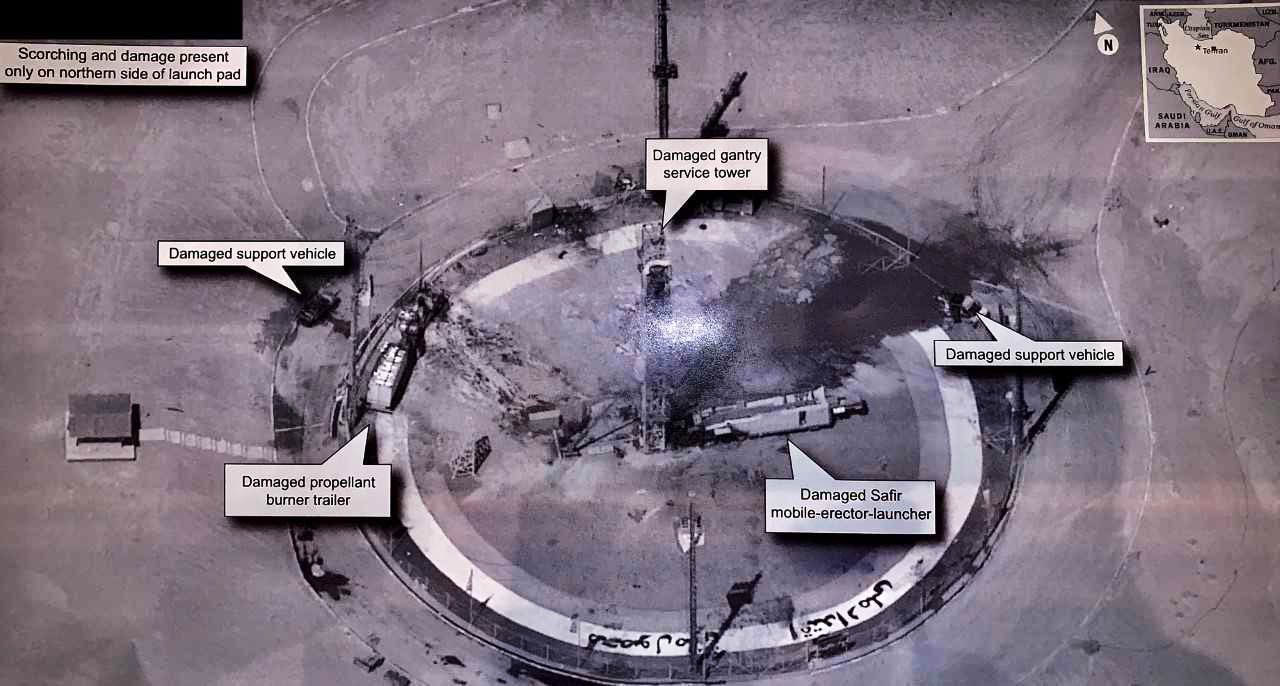The US President has done it again.
Just when you think things can’t get any more—”unusual”— in the White House, the President has Tweeted an American spy satellite image as part of a juvenile jab at Iranian leadership. After some sleuthing, astronomers were able to figure out which satellite it came from: a (formerly) top-secret satellite called USA 224, an optical reconnaissance satellite.
Trump’s tweet unwittingly revealed some of the capabilities of American satellite imagery. USA 224 has been kept top-secret for national security reasons, so the Intelligence Community is probably not very happy about this. Why reveal your intelligence-gathering capabilities to your adversaries, including Iran itself?
Iran and the USA have a fractious relationship going back decades. The USA accuses Iran of trying to develop nuclear weapons and of sponsoring terrorism. Iran accuses the USA of sponsoring terrorism by supplying Israel with billions of dollars worth of high-tech weaponry.
Things calmed down when Iran signed a deal under Obama limiting their nuclear technologies in exchange for relief from economic sanctions. When elected, Trump scrapped that deal. Since then, things between the USA and Iran have heated up again.
Iran has been developing launch capabilities for years now. They’ve been testing rockets at their Imam Khomeini Spaceport in norther Iran. At the end of August, a launch attempt failed on the pad. Unclassified satellite images showed a plume of smoke rising from the facility, and not much else.

But Trump loves to get his jabs in, so he tweeted this:
It appears that Trump was briefed with a print of this classified image, and that he took a picture with his phone and tweeted it. You can see the camera flash in the middle of the image. Immediately, people were concerned that he had revealed US surveillance capabilities.
“… there is no doubt in my mind that it is an image taken by USA 224.”
Astronomer Marco Langbroek.
Some people wondered what the big deal was. The image doesn’t seem to reveal much, on the surface of it. But it’s problematic, and here’s why:
Astronomers are smart people. Much smarter and more resourceful than Trump can suspect. One Dutch astronomer named Marco Langbroek got to work on Trump’s satellite image and revealed his findings in tweets of his own:
In an interview with NPR, Langbroek described USA 224 as a large telescope “not unlike the Hubble Space Telescope. But instead of looking up to the stars, it looks down to the Earth’s surface and makes very detailed images.” USA 224 is a powerful, high-tech piece of equipment that cost billions of dollars to build. It has a 2.4 meter mirror, the same size as the Hubble’s.
USA 224 is what’s called a KH-11 satellite. It’s the 15th satellite of that type. It’s also called the “Evolved Enhanced CRYSTAL System” and code-named Key Hole.
The thing about USA 224 and satellites like it is that they’re easy to track in the sky. In a blog post at SatTrackCom, Langroek explained how the shadows in the image were combined with its location to find the time the image was taken. Then, that was compared with the known track of spy satellites to confirm that it was USA 224 that took the image.
Then Cees Bassa got to work. Bassa is a professional astronomer at ASTRON, the Netherlands Institute for Radio Astronomy. He was able to determine the resolution of the image, and the capabilities of USA 224 itself.
The detail in the image is surprising, even to satellite imagery experts. In an interview with NPR, Melissa Hanham of the Open Nuclear Network in Vienna said, “… I did not believe <the image> could come from a satellite.” Hanham also said that “I imagine adversaries are going to take a look at this image and reverse-engineer it to figure out how the sensor itself works and what kind of post-production techniques they’re using.”
Normally, there’s a certain sobriety to intelligence gathering and surveillance. Nations like to keep their capabilities secret, sharing them with allies only when needed, and obfuscating and denying to their adversaries. Details of USA 224’s capabilities, mission, and orbit are classified.

Now Trump has revealed some of the USA’s cutting-edge spy capabilities, all for the sake of a tweet poking fun at a rival nation.
The political dance around this will be predictable. Supporters of Trump are making excuses for it, and opponents are criticizing his lack of judgement. But a couple things stick out.
This image has a much higher definition than anything the US has admitted to in the past. Other nations probably guessed that the US has advanced satellite imaging, but now they no longer need to guess. In the high-stakes game of international intelligence and espionage, that matters.
Also, revealing security secrets is a crime. In 1984, an intelligence analyst at the Naval Intelligence Support Center sent three classified images from the KH-11 spy satellite to the Jane’s Fighting Ships publication. His name was Samuel Loring Morison, and he was convicted and sentenced to two years in prison, though he was later pardoned.
Trump won’t face any charges though. As President, he has the right to reveal things like this. According to Trump himself, he has the “absolute right” to do so.
“We had a photo. I released it, which I have the absolute right to do.”
Donald Trump, to White House Reporters.
Ideally, that absolute right would be exercised with caution and after consultation with intelligence experts. Not in a tweet mocking a rival.
More:
- Forbes: Trump Accidentally Revealed The Amazing Resolution Of U.S. Spy Satellites
- Ars Technica: President Trump tweets picture of sensitive satellite photo of Iranian launch site
- SatTrackCam Leiden (b)log: Image from Trump tweet identified as imagery by USA 224, a classified KH-11 ENHANCED CRYSTAL satellite
- NPR: Amateurs Identify U.S. Spy Satellite Behind President Trump’s Tweet


I would appreciate if Universe Today does not blatantly post such politically polarizing articles in the future. It is possible to discuss the ramifications of the satellite image, without making it an anti-Trump article. It is very slanted. For example, many Americans were leery of the nuclear deal President Obama signed with Iran. They did not like the idea of giving Iran billions of dollars of aide, and access to nuclear testing. Yet here, only one side is shown.
This may have been a gaffe on the President’s part, but this happens on both sides. For example, during a Presidential debate in 2016, Hillary Clinton inadvertently mentioned the U.S.’s nuclear response time. It is not okay, but it does happen in our social media age on both sides.
Our current President has done a lot to advance returning to the Moon, so I would appreciate you not alienate half of your audience by mixing science and politics in the future.
Mr. Krug, no one is trying to polarize opinion, be one-sided or political. However, you cannot ask our writers to avoid reporting pertinent facts or what is self-evident simply because they contradict your political views. Based on previous posts, it is clear that your objections are based on that, not on a desire to be apolitical or balanced.
Why is Universe Today speculating on things like the fact that the intelligence community is “probably not happy” about this? Or telling me what’s “problematic”? Or describing my country’s President’s statements as “Jabs”?
I come here for SCIENTIFIC information and facts about our universe– not to know what you think is “problematic” or what you think the intelligence community “probably” thinks about something. Don’t be one of the organizations that drag your political opinions into *everything*. Science is supposed to be the last thing we have that’s not infected.
And don’t tell me you didn’t. You definitely did. The wording used in this article is not how you write scientific facts; it’s how you write your thinly-veiled opinions and political speculation (neither of which we care about). The New York Times opinion pages can tell me what the intelligence community “probably” thinks– you can tell me what’s scientifically proven or hypothesized.
Next time you find yourself using words to describe what another person is probably thinking, stop, erase that line, and start again. You’re no longer writing science.